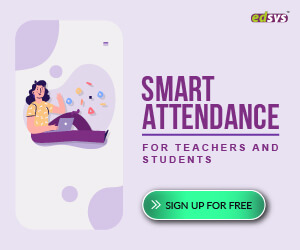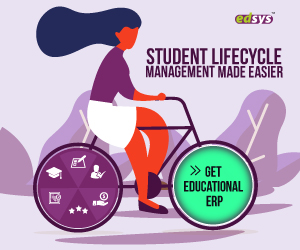Tracking of classroom behaviour is very important in today’s learning portfolio but doing it without shaming students or giving the feel of punishment is a challenge.
Teachers are looking forward to creative ways to track their behaviour that paves the way for positive reinforcement.
Free Class Room Activity Apps (Check it NOW)
In fact these trackers can be a great option to help students correct any unknown flaws and make positive decisions throughout the learning phase.
Certain classroom behaviour trackers can even make the learning sessions more interesting and students will feel more engaged and diligent.
Here we are sharing some of the amazing creative ideas that are teacher tested that can track the classroom behaviour of students in an interesting, joyous and friendly manner.
1. Classroom Data Sheets
This is an improved version of the old behaviour chart used in traditional classrooms.
There will be different columns spread out in the sheet including punctuality, complete uniform, attendance, complete assignments, weekly test marks, classroom distraction and more.
Teacher will have to take some extra time out of their teaching time to fill out these columns for each student by the end of the day.
The chart will be analyzed monthly and students can get an idea of their behaviour pattern over the month.
Teachers can be stricter by asking the monthly report to get signed by the parents or make it simple by giving just warning and a chance to correct them.
2. Number Line
This is a more systematic way of tracking the behaviour of students on a scale of -10 to 10.
First of all teacher should make clear about the ‘classroom rules’ to students and let them know about how their behaviour is assessed.
This gives students a clear vision of how to behave in class and work towards earning more points.
Teacher can give marks from 1 to 10 in the number line for a positive behaviour and give marks from -10 to 0 for any negative behaviour. The total marks earned for each day will be a sum of these marks.
If their score is low for certain days, students can work to improve their monthly score by behaving well for rest of days.
3. Behavior Bingo
This is an interesting game that helps to manage the classroom in a jovial way.
Teachers can place a chart with numbers from 1 to 100 in 10 horizontal rows.
There will be a box of marbles with magnet attached to the backside. Whenever a student comes up with a good choice, accomplish a task or reach a milestone, they can attach a marble to the number on the board.
The ultimate aim of the game will be to get a complete line of numbers full like horizontal, vertical or diagonal just like the bingo game.
That is why it is a team game as students will be motivating each other to earn the points and get the final prize.
Teachers can even discuss rewards for each line completed.
Know More: 24 Best Classroom rules that will improve students behaviour
4. Classroom Coupons
Kids would love this strategy to track classroom behaviour as they get a chance to fulfil their small desires in classroom with a good behaviour.
Students can gain coupons for their good deeds in classroom and lose it if they fail to meet any ‘classroom rules’.
At the end of every week or month, teachers can analyze the coupons when they can exchange it to fulfil certain activities.
The list can include ‘kid’s desires’ like switch seat when they can move their seat near to their particular friend or wearing sun glass to school and more.
This strategy is sure to inspire students to have a look on their behaviour.
5. Bee-havior Punch Cards
This is a cute but effective way to encourage good behaviour and positivity among students.
There will be a punch card numbered from 1 to 20 in a circular motion.
A student can punch the card once against a number when they are given a positive feedback by a teacher for their classroom behaviour.
When a student succeeds to fill up the whole punch card, he will be getting a reward.
The type of reward can be decided after discussion with students and know their interests beforehand.
This encourages kids to keep up their behaviour and earn what they like in the form of rewards.
6. Blurt Beans
This is another creative way of assessing and correcting student behaviour in classroom.
When teachers are finding it difficult to control the student actions by just advising, this idea can do the trick.
All students of the class will be given X number of beans at the start of the class. Each time when the student violates a ‘classroom rule’ like blurting out answers, a bean will be taken back.
Likewise, the number of left out beans will be counted at the end of the day to see where they stand.
Kids can have a look at the result to get a physical reflection of their actions in the class.
This is sure to motivate them in the upcoming class days to improve the number of beans retained.
7. Personal Clip Chart
We have seen classroom management clip charts that are designed to manage the class as a whole.
This personal clip chart method is used to help each student to have a look at the impact of their behaviour in class and gets a chance to correct it.
The chart can include columns like great, good, warning and finally parent contact. The clip will be placed on the chart based on their behaviour.
Teachers can even give different colours to these columns to give an impact.
The method gives a clear visual warning for their unwanted behaviours and will inspire students to focus on their chart and behave better.
8. Star Bucks
This is a fun strategy of classroom management that works on Star Wars and Monopoly Money.
This interesting game plan gives kids an opportunity to earn money for ticking the lines for good listening, daily attendance or punctuality or for completing certain special deeds.
At the same time, they have to pay back to teacher if they violate any ‘classroom rules’ like blurting out answers or distracting classroom.
Teachers can fix a time every week to analyze these points and kids can ‘shop’ with the money they earn every week.
Know More: 2019’s Top 11 Classroom Challenges According to Teachers
9. Digital Marbles
In this interesting method, teachers can set different goals for classroom to earn marbles throughout the day.
You can flexibly add a reward amount for each marble type or personalized rewards and then set targets to achieve those marbles.
Teachers can give a finishing line like 15 marbles for a class and students can work together to achieve the line and then start all over again.
In traditional classrooms, teachers used jars to fill up the marble but today’s classrooms prefer the idea of digital marbles.
If your students are not really interested in physical jar or marbles or if there is not enough space in the room for these, digital marbles can do the trick.
You can even polish these ideas to include digital cookies, hot cocoa or sundaes.
10. Daily Behaviour Charts
This is a comparatively simple but effective idea for tracking classroom behaviour.
A chart is prepared using all the subjects allotted for the day and ‘break times’ like brunch break and lunch break. Numbers 1, 2, and 3 will be marked against all these categories.
The corresponding teacher for the subjects will give a mark for each student depending on their behaviour during the period.
At the end of the day, each student will get the final mark which will be the average of each category.
This strategy gives them an opportunity to improve their scores throughout the day.
11. Team Tables
This is a fun but creative way of promoting good classroom behaviour.
Class can be divided into four groups based on their seating arrangement and name them with a colour, say red table, blue table, green table and yellow table.
The performance of each table will be evaluated based on many categories like punctuality, attendance, communication, up to date with lessons and following ‘classroom rules’.
Marks of each table will be a team effort and this helps them to work together as a team and bring in good sportsmanship.
The winning table for each month will be given rewards based on the student interest that can be decided beforehand.
A token of love gesture can be to put up a customized balloon in the corner of classroom with winning table’s name on it.
12. ClassDojo
All the strategies discussed were more or less manual ideas to track the classroom behaviour and improve it.
Class Dojo is one of the most efficient tools for tracking the classroom behaviour digitally. Its feedback feature performs like a conventional classroom points system.
However, it records more information in a speedy and efficient manner and the calculations are done using a computer or mobile which would be more accurate.
Moreover, they provide immediate feedback to parents and teachers and changeover results from students will be more speedy.
However, teachers should make sure that these ideas won’t turn disruptive to instruction but carried out in a systematic way.
Also just tracking the behaviour alone does not complete the task but teachers have to sit to sort it out to change the negative behaviour if any.
It is important to discuss with students to learn if they are comfortable with these tracking tools.
Teachers are not supposed to enforce any behaviour tracking tool to a class which will bring negative results.
If they find it shaming or a waste of time, it is always good to ask them to come up with better ideas if any and implement it as a team.
Some teachers even follow the idea of private behaviour chart for students who are interested and use other methods to track the general behaviour of class.


